When down in Seattle a few weekends ago, I had a chance to visit the newly opened stations on the Link light-rail line: Capitol Hill and University of Washington:
.
.
This extension has transformed accessibility in north-central Seattle. Before, the I-5 freeway was a mental as well as physical barrier, separating the nearby neighbourhood of Capitol Hill from the downtown and the rapidly emerging job centre of South Lake Union. U-Dub was a car trip away, one typically bogged down in the congestion just north of the ship-canal bridge. Now both are mere minutes away.
The stations are something to behold – both the garish ones built for the original bus tunnel that opened in 1990 and the two more restrained ones for Central Link which opened in March this year.
The station at the university is situated some distance from ‘Red Square,’ the heart of the campus, but next to Husky Stadium and near the hospital complex.
.
Not surprisingly given Seattle’s ridge-and-valley topography, the stations are deep (though the elevators are fast) – but they haven’t been stingy in the size of the platforms and public spaces (particularly when compared to the stingy stations of the Canada Line).
.
They’ve also continued the commitment to public art and the expressive use of colour:
.
The Capitol Hill station is much better located, situated on Broadway, the high street of the neighbourhood, and next to Cal Anderson Park.
.
However, too much grey:
.
Perhaps intended to provide the backdrop to the dramatic public-art piece, Jet Kiss
.
The Link extension has been an immediate success, attracting thousands more riders (anyone have data?). But it still doesn’t feel like a city-wide, much less region-wide, system. (One of the great losses of Seattle was the public’s failure to fund region-wide rapid-transit, notably back in 1968 and ’70.) Plans now call for a multi-billion-dollar expansion to be put to a vote in the next year that would extend light-tail to the other side of Lake Washington (hello, Microsoft) and anchors to the north and south by 2023.
Vancouver will be watching.


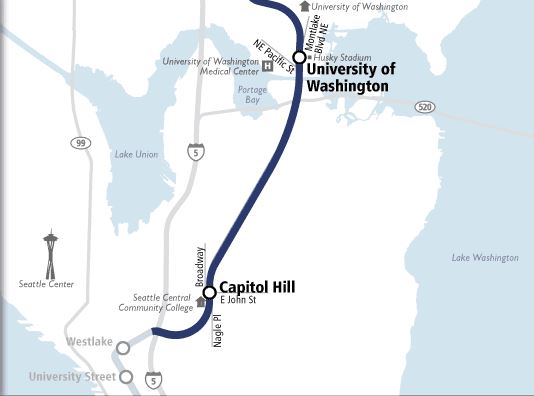
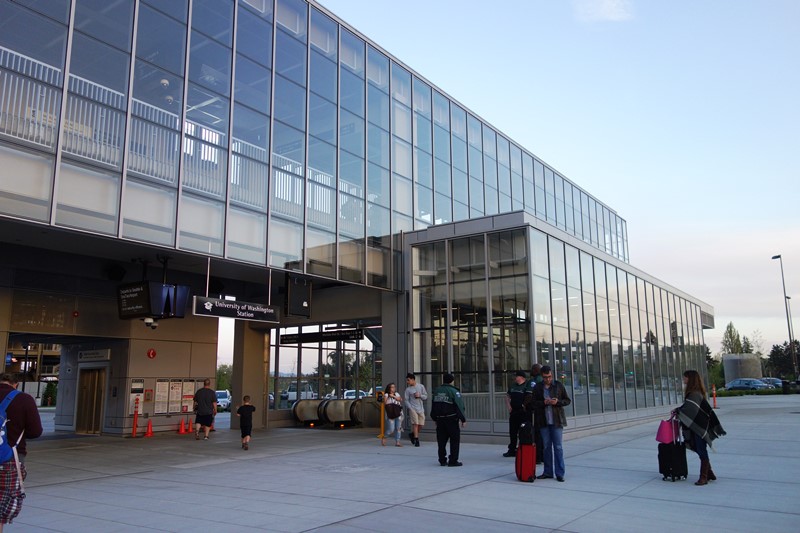
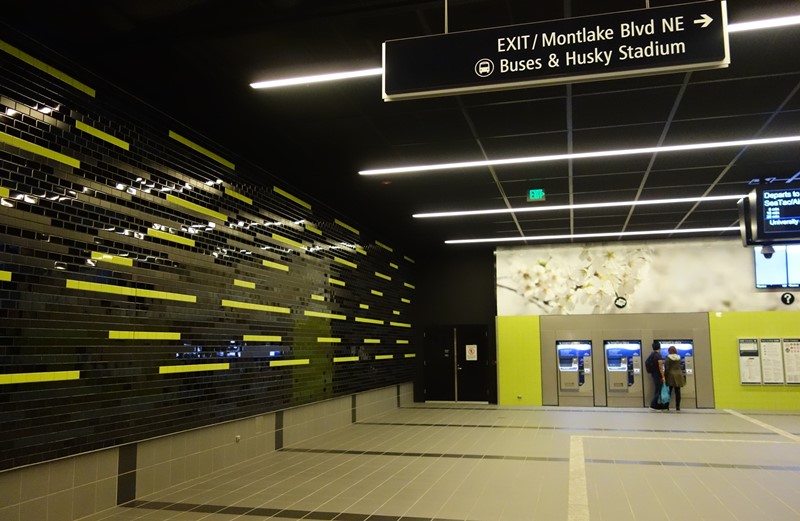
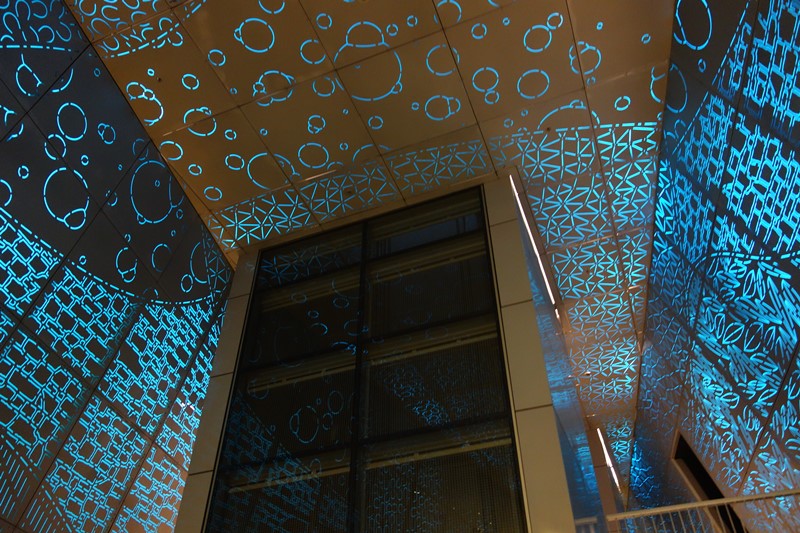
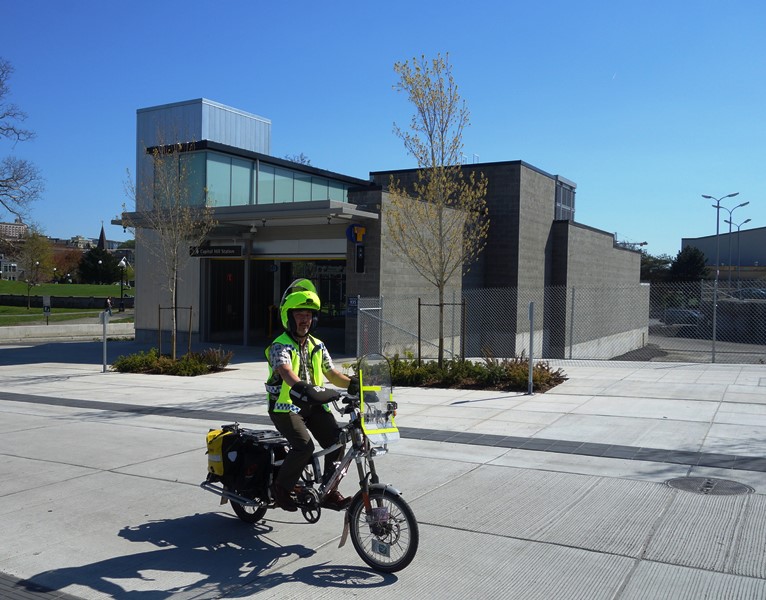
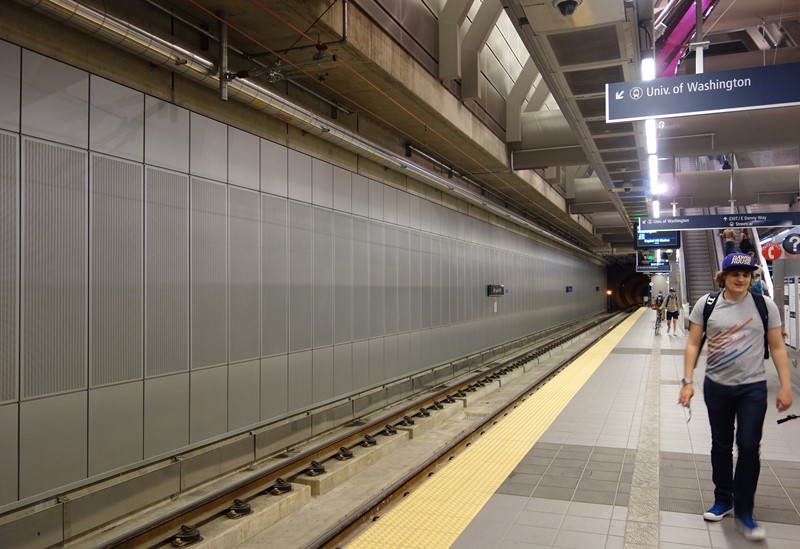
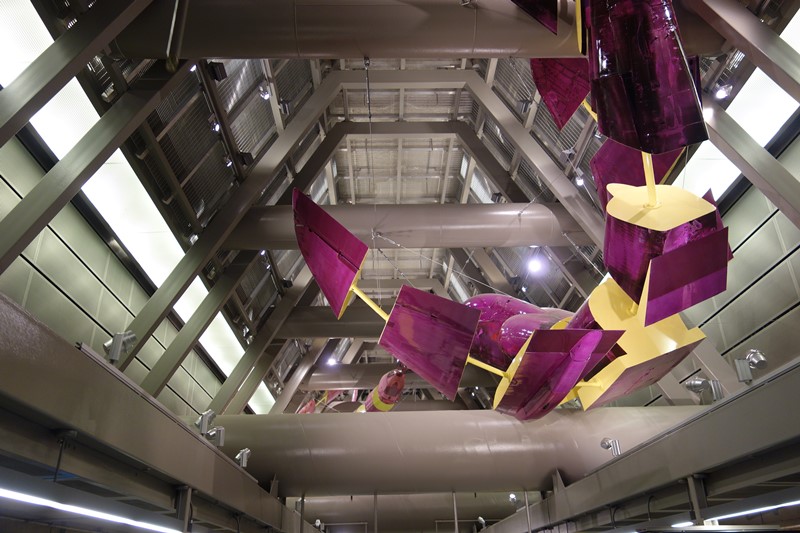











http://www.citylab.com/navigator/2016/04/cars-freedom-seattle-driving/478932/
“Seattle started a rail system too late, too haphazardly, so the bus is still the primary form of public transit. Early on, I took the bus to an office job where I did some contract work, and I thought it might be OK. Then, in mid-winter, I waited nearly two hours in the drizzling rain for a connecting bus to get to my brother’s house across town only to realize the stop was actually below ground, in a tunnel. And I regularly sat on a bus for an hour to get to my friend’s house nine miles away. Even though I could still get some reading and people-watching in, the bus in Seattle was not the egalitarian, efficient way of getting around that the subway had been. Instead of feeling connected to my fellow bus riders, I felt like all of us would rather be anywhere else.”
…
“Last month, Seattle’s light rail system opened two more stops, a huge transit advance for the underserved city. The line is still far from my neighborhood and limited to fifteen stops—a fraction of the New York subway, or even the D.C. Metro, but it’s a start toward a big change.
Between here and there, Seattle and New York, teenager and adult, I’ve learned that freedom means different things. Sometimes you find it on your own, by getting in the driver’s seat when things seem uncertain, and sometimes you find it in ceding some control for a thing that works for everybody, and joining them for the ride.”
I guess you’ve seen what planned for Montréal, with $3 billion committed by the CDP. They didn’t forget the suburbs as the Mayor’s did here. 24 new stations, Kpow!
http://www.montrealgazette.com/business/cnw/release.html?rkey=20160422C8120&filter=5611
http://cdpqinfra.com/en
Which suburbs did the mayors forget?
Quite a few I’d say. How much was it now, $7.5 billion for about 12km of new rapid-transit and some buses. A little spur line across the Broadway ridge to the middle of the residential neighbourhood and a short run from Surrey to Langley. Nothing for the North Shore except a faster Sea Bus turnaround.
Montreal is proposing 67km of new rapid-rail, much like the Canada Line, for only $5.5 billion.
That’s more than five times the distance of new fast rail for only two-thirds the money! It also includes three substantial bridge crossings, including the St. Lawrence River.
Of course it’s cheaper per km, nearly 85% is on existing rail ROW, above ground. At least 2 of the 3 bridges already exist. Not exactly comparable infrastructure situations between the two regions.
Outright lie; look here: http://mayorscouncil.ca/ Just for the North Shore:
• Increased SeaBus frequency to provide service every 10 min in rush hour and every 15 min at other times
• New B-Line – Metrotown to Capilano University via Willingdon Avenue
• New B-Line – Lynn Valley Centre to Downtown Vancouver via 29th Street, Lonsdale Avenue and Marine Drive
• New B-Line – Dundarave to Phibbs Exchange via Marine Drive/3rd Street
• 25% more regular bus service including late at nights
• 30% more HandyDART service
• Lonsdale Quay and Phibbs Exchange upgrades
• cycling and pedestrian improvements near transit stations including bike parking
• An additional $36 million / year for major road upgrades
It’s not new rail in Montreal. Most of the line has been there in active passenger use since the the early 20th Century. It’s merely being upgraded
More like 12-13 new stations, with 11 existing AMT rail stations on the Deux Montagnes line being electrified (in fact, the proposal looks like CDP plans to take over the Deux Montagnes line).
Hopefully the public sector isn’t on the hook for fare revenue risk while CDP gets to build a nice shiny asset. I’m not convinced those services to Deux Montagnes and St. Anne-de-Bellvue can support 12-min headway in the short term.
They’re proposing P3s, so the public could be somewhat protected and the line to Ste-Anne’s 12-min headway is based on graduated increased ridership.
The interesting thing is this is being proposed the Caisse – which is a shareholder in the Canada Line’s operating contractor – InTransitBC (together with BCIMC and SNC Lavalin).
So, in a way, the Montreal proposal, with its airport branch, is like “Canada Line II”.
We took the train from Vancouver to Seattle, then the new streetcar line from the Seattle train station to our hotel in Capitol Hill. The next day, we rode the new Link extension.
We were riding out to UW, and the trains coming the opposite way (ie into downtown) were packed with people going to the Mariners game. And, I wondered to my wife, how did all these people get to the game before? It felt like no expenses spared. The stations are huge. If you have claustrophobia being that far underground, don’t worry about it. The amount of concrete and steel down there is a sight to behold. I think the Capitol Hill station has at least three entrances. Coincidentally, we ran into Gordon on the way back.
Seattle is in desperate need for mass transit, especially to the Eastside. But, Lake Washington is so wide, the price must be crazy. Some of the bigger companies, like Google are opening offices on the Seattle side because they know that their employees don’t want to battle their way across the water.
Thanks for using our new subway system!
Ridership has been a major success so far. The entire Link rail line has been averaging 58,000 boardings/day since U-Link opened, and had a maximum one day of 80,000. Before U-Link the line was averaging 35,000 boardings/day. (http://seattletransitblog.com/2016/04/20/just-a-month-old-ulink-is-already-breaking-records) Still nothing compared to Vancouver ridership, but headed in the right direction.
By the way, the “ST2” Link expansion to the Eastside (and north to Lynnwood) is already funded and in the queue for construction. The ST3 vote this fall would provide funding to extend the system even further, and built a second north-south line in Seattle.
Yup – here’s the Sound Transit page for ST2 (to Bellevue).
Note that Kemper Freeman, owner of Bellevue Square, opposed ST2 and did not want a station at Bellevue’s downtown mall.
The ONLY downtown Bellevue Station east of I-405 will be several blocks east of Bellevue Square (but adjacent to office towers and a transit exchange).
There’s another station close to downtown farther south, but not near the office core, plus there’s one east of I-405 near the hospital district.
http://www.soundtransit.org/st2
http://www.soundtransit.org/eastlink
Passing along this Seattle Times article.
Mike Lindblom
25-year wait for Sound Transit to finish light rail? Here’s why
Originally published April 23, 2016 at 8:00 am Updated April 23, 2016 at 6:49 pm
http://www.seattletimes.com/seattle-news/transportation/25-year-wait-for-sound-transit-to-finish-light-rail-heres-why/
And, some coverage of the art.
Art on the go: A look at the art in Seattle’s new light-rail stations (and a poll)
Originally published April 22, 2016 at 6:00 am Updated April 22, 2016 at 1:19 pm
http://www.seattletimes.com/entertainment/visual-arts/art-on-the-go-a-look-at-the-energetic-public-art-in-seattles-new-light-rail-stations/